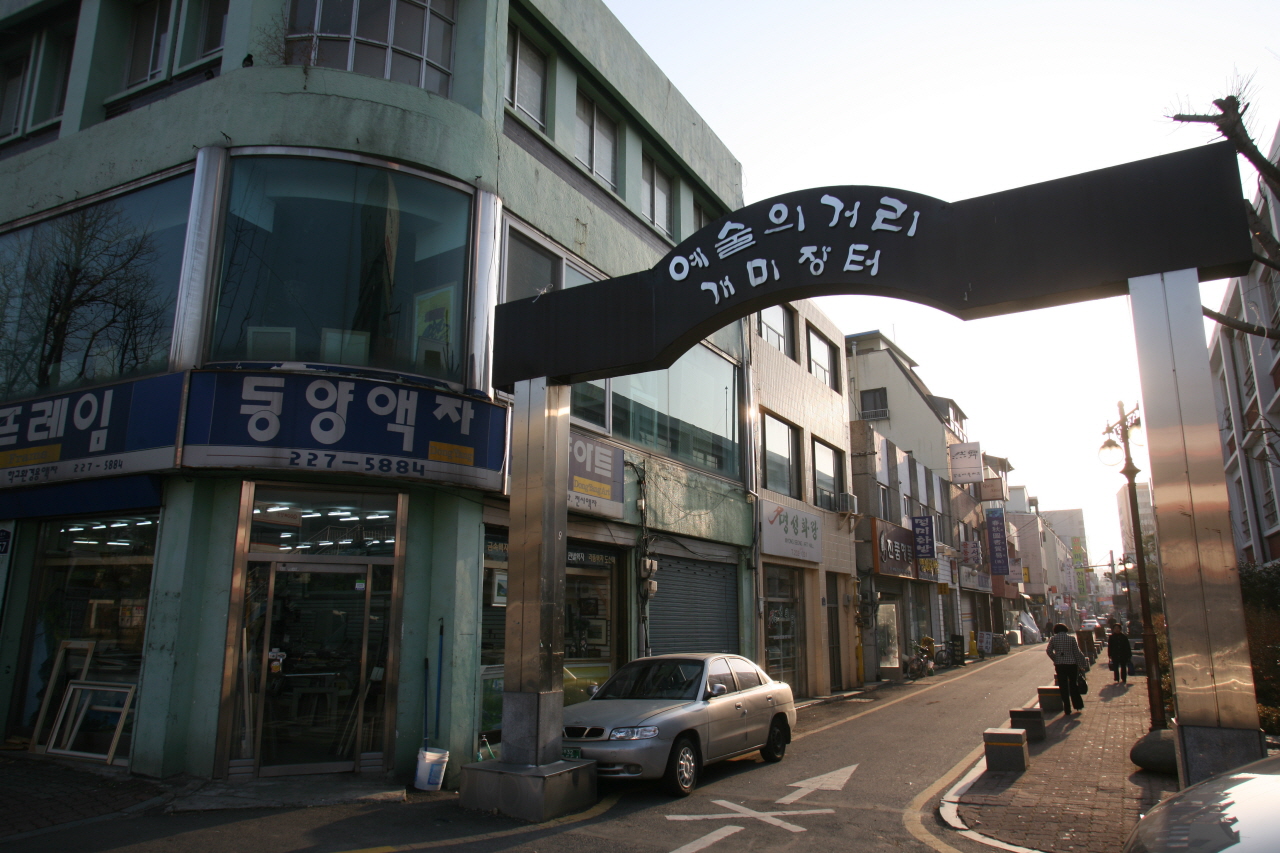City of Art: Guide to Gwangju’s Art Museums and Art Street
Photos courtesy of Gwangju Metropolitan City
Gwangju sits in the middle of a fertile valley surrounded on all sides by mountains. In spring, the cherry trees blossom along the streets and streams. In autumn, Mudeung Mountain is awash in color. Even in the chill of winter and the heat of summer, beauty surrounds us. It is a city replete with inspiration for all manner of artists, from painters to poets.
Known as the “City of Light,” Gwangju enjoys its position as both a center for freedom and a center for art: two avenues that are often connected with each other. But where does a new community member, traveler, or native child go to find out about such avenues?
Gwangju offers a street dedicated to art, two museums, and a handful of galleries. In even-numbered years, it hosts the Biennale, a large international art show, which wrapped up its 2016 show in November. Any of these places can be enjoyed individually or can be visited over the course of a day trip to the area.

Gwangju Museum of Art
(52 Haseo-ro, Buk-gu)
The best place to begin is the Gwangju Museum of Art. It is the farthest away from the other three and also the only one that is not easily reached. Opened in 1992, the museum is now a part of the Gwangju Biennale Committee and is located near Biennale Hall. It is home to over 500 pieces of art, including works by Oh Ji-ho and Yang Su-ah. Avenues like this one continue to promote local and regional arts through education programs and shows.
The Gwangju Museum of Art is an enjoyable respite from the busy city. It has plenty of space to sit and contemplate the artwork on display both within the building and outside in the surrounding park area. The artwork is a mix of modern and traditional. During the Biennale, some of the galleries are part of the show.
Other area attractions include the Gwangju Folk Museum and Biennale Hall.

Art Street
(Yesul-gil, Dong-gu, Gwangju)
Returning to downtown Gwangju, the rest of the way can be traversed on Bus 09. The easiest way for any artist to find their feet in the city is by wandering down Art Street, which parallels Geumnam-ro and is behind the Gwangju International Center. Along the street, you can find one of the master potters of Korea, Kim Ok-soo, whose pottery explores traditional Korean forms and modern design. Down the street, a woman creates bojagi, traditional Korean patchwork cloths primarily used for wrapping presents or wall-hangings. There are handcrafted gifts for friends and family, traditional hanbok, as well as art supplies and antiques.
Art Street is also the home to several smaller art galleries with rotating shows. Saturdays turn into an open-air market where people can shop or experience many artistic activities.

Uijae Museum of Korean Art
(155 Jeungsimsa-gil, Dong-gu)
From the Asia Culture Center, take the 09 bus to Mudeung Mountain (the last stop). This is the primary entrance for hiking into the mountain, and it has a plethora of restaurants and coffee shops. Walking towards Jeungsim Temple, the park area fades away and a few small buildings appear. Pause near the bridge to the tea shop and turn to the left. This is the entrance to the Uijae Museum of Korean Art.
The focus is on the art and history of Heo Baekryeon, a Gwangju local who was instrumental in the rebuilding of the city after the Japanese departure and subsequent war. The location where the museum is currently used to be connected with Heo Baekryeon’s agricultural school. Some of the buildings are still accessible, including what is now a tea shop.
The highlights of the museum are on the second floor, where the calligraphy work is displayed. Heo Baekryeon’s work is also on display at the Gwangju Museum of Art.
The entrance fee is 2,000 won for adults, 1,000 won for youth, and children six and under are free.

Woo Jae-gil Art Museum
(140-6 Uijae-ro, Dong-gu)
After finishing your trip to the mountain, return to the 09 bus, and get off at the Unlim Middle School stop. Cross the street, and you will see the Woo Jae-gil Art Museum, another Gwangju native. The word “museum” is a bit of a misnomer – do not expect a quiet building. It is a coffee shop, gallery, and museum all rolled into one. The museum aspect is outside on the patio and in other various pieces inside. A gallery to the left as you enter has a rotating show. This museum would be a great place to relax after visiting Mudeung Mountain or while out exploring the area. It is quirky, open, and a good place to contemplate the light that comes from Gwangju’s art scene.
Gwangju’s artistic side is alive and well. While known for the turbulent events of May 18, Gwangju has taken its tragic past and turned it into something beautiful.




